- Home
- J. R. R. Tolkien
The Lay of Aotrou and Itroun Page 4
The Lay of Aotrou and Itroun Read online
Page 4
‘Women are yet alive who tell they were taken away when in Child-bed to nurse Fairie Children, a lingering voracious Image of them being left in their place, (like their Reflexion in a Mirrour)’ (Kirk 72).
To a well they went for water clear (l.5). The poem does not specify who ‘they’ are, but in the original Breton and the French translation it is not some anonymous group but rather the mother who left her baby. Villemarqué’s French translation has the mother say En allant à la fontaine puiser de l’eau, je laissai mon Laoik dans son berceau, ‘Going to the well to draw water, I left my Laoik [a proper name] in his cradle’.
like a wrinkled toad (l.10). The appearance of the faerie child is a convention. In contradiction to one of the traditional fairy epithets, ‘Fair Folk’, changeling babies are traditionally described as ugly, wizened, preternaturally small, and slow of growth.
O Mary Maiden (l.17). The prayer derives from the belief, described by Katherine Briggs, that Corrigans ‘have … a great hatred of all Christian symbols and in particular of the Virgin Mary, who takes under her special protection those human infants whom the Korrigans attempt to steal’ (156).
a cross-hilt sword (l.38). The cross-hilt makes the sword a Christian symbol, and therefore abhorrent to the corrigan (see O Mary Maiden above and discussion of revisions below). It is also, of course, made of iron, a substance inimical to fairies, and often used to drive them away.
the first egg (l.50), which reveals the changeling baby’s age, is a standard trope in fairy lore. Loth’s Le Nain de Kerhuiton, a collection of Breton folklore, records a similar episode.
Upon seeing water boiling in a number of egg-shells ranged before an open fire a polpegan-changeling is so greatly astonished that he unwittingly speaks for the first time, and says ‘Here I am almost one hundred years old, and never such a thing have I yet seen!’
(Loth, Le Nain de Kerhuiton, quoted in Evans-Wentz 212)
land of Brezail (l.53). Brezail, or Hy-Breasail, was a name for one of the Celtic Otherworlds, and figures in Celtic myth as a magic land in the west. It appears in Villemarqué’s Breton as ‘Brezal’ and in his French paraphrase as ‘Brézal’. Tolkien’s comment in ‘On Fairy-stories’ that Hy-Breasail has dwindled from its mythic estate to become the ‘mere Brazils, the land of red-dye-wood’ (MC 111), suggests his disaffection for the rationalization of myth into history.
silver birds, acorns of gold (ll.54–55). These recall the white birds and magical fruits and berries seen by the mariners of the Celtic imramma (‘Voyagings’) such as the Navigatio of St. Brendan and the very similar Voyages of Bran and Mael Duin. Tolkien’s own Imram, appended to The Notion Club Papers (Sauron Defeated pp. 296–9) and based on the Navigatio, mentions a tree with what appear to be white leaves which suddenly ‘as white birds rose in wheeling flight’ (SD 298).
our land (ll.62 & 64). This mention by the changeling child is a reference to the Celtic Otherworld, which has its own royal hierarchy, and is generally envisioned as contiguous with but invisible to this world. The Otherworld is often located over the sea or under a lake, but caves, grottoes, and forests can also be entrances to the fairy world, and humans can cross the boundary without knowing it.
the room behind (l.66). In the cases of changeling children, corrigans can clearly enter and leave the ‘real’ world at will.
cloth of silver (l.67). The human child, still wrapped as faërie royalty, has been surreptitiously returned by the corrigan when the spell falls.
For the most part the revisions from rough drafts to fair copy are minor – the alteration of a word or phrase here or there, for example from the ‘Mari goant’ and ‘Mary la belle’ of the Breton and French source to Tolkien’s ‘Mary on earth’. However, one change – or sequence of changes – between early draft and final copy involves a radical departure from the Breton source. Both the change and the nature of the change are worth noting. In the final copy lines 37–40 read as follows:
And if he speaks, there hangs on thy wall
A cross-hilt sword old and tall –
Raise it to strike and he will call,
And the spell will fall.
The earlier draft is quite different:
And if he speak, then beat him well,
Beat him sore till he doth wail.
They will come at his call, as at a spell;
They will not fail!
These last lines are a fair translation of the Breton, which I quote here to give a sense of the shape and flavor of the original language, that language which led Tolkien to the discovery of the particular culture whose myth and folklore are embedded in it.
Pa’n deuz prezeget flemm-han, flemm!
Pa eo bet flemmet ken, a glemm;
pa eo klevet, he lammer lemm.
(Barzaz-Breiz 52)
Here is the passage in Villemarqué’s prose French translation:
Quand il a parlé, fouettez-le, fouettez-le bien; quant il a été bien fouetté, il crie; quand il a été entendu, il est enlevé promptement.
(ibid. 53)
The motif of the beating is apparently a more standard way of exorcising the changeling than the cross-hilt sword. Loth reports just such an end to the egg-shell episode described above. When the changeling child speaks and reveals his age, the mother responds by beating him.
‘Ah! son of Satan!’ then cries the mother, as she comes from her place of hiding and beats the polpegan – who thus by means of the egg-shell test has been tricked into revealing his demon nature.
(Loth, Le Nain de Kerhuiton quoted in Evans-Wentz 212)
Tolkien’s decision to substitute the threat of the cross-hilt sword for the savage beating of the changeling child explicitly matches Christianity against pagan faërie, and harmonizes more nearly with the dialogue between the earthly Mary and the heavenly Mary which is the poem’s occasion. A similar shift occurs in lines 57–60, which in Tolkien’s fair copy are as follows:
Thou hast seen too much, too much, my son!
Thy words are wild, thy looks are wan.
This sword shall make thy dark blood run,
Thou art not my son!
where his earlier draft has:
Thou hast seen too much, too much, my son!
Thy words are wild, thy looks are wan.
I will beat thee, beat thee till the blood run.
A, cry, my son!
Again, the earlier version is a fair approximation of the Breton poem, though Tolkien has substituted description for the onomatopoeic sound effects of the original.
– Re draou a welaz-te, va map;
Da flap! da flip! da flip! da flap!
Da flip, potr koz! ha me da grap!
(Barzaz-Breiz 52)
which are replicated in Villemarqué’s translation:
Tu as vu trop de choses mon fils: clic! clac! clic! clac! Petit viellard, ah!, je te tiens!
(ibid. 53)
In the same vein, lines 61–64, which in Tolkien’s fair copy read:
A! stay, a! stay thy cruel hand!
Soft thy son lay in our land,
But thou wouldst slay one who did stand
A prince in our land.
were in the earlier version,
Ah stay, ah stay thy cruel hand;
For soft thy son lay in our land,
But thou dost beat one who did stand
Once King in our land!
Here both Tolkien’s fair copy and his draft version depart markedly from the Breton source. While the fair copy eliminates the last trace of physical violence, a change dictated by the alterations in the previous stanzas, both fair copy and rough draft agree in having it be the changeling child who is faërie royalty (either prince or king), whereas in both the Breton original and Villemarqué’s French rendering it was the human child who was king in the faërie land (‘I did not harm your son; he is our king in our land’).
– Sko ket gant-han, lez-han gan-i;
Na rann-me droug da da hini,
‘Ma brenn er br
o-ni gan-e-omp-ni.—
(ibid. 52)
– Ne le frappe pas, rends-le-moi; je ne fais aucun mal au tien; il est notre roi dans notre pays. –
(ibid. 53)
‘THE CORRIGAN’ II
A Breton Lay – after: ‘Aotrou Nann Hag ar Gorrigan’ a lay of Leon
Tolkien’s subtitle here is a more formal citation of source than his pencilled jotting in the margin of ‘The Corrigan’ I. ‘Aotrou Nann Hag ar Gorrigan’ (‘Lord Nann and the Corrigan’) is entry number III in Hersart de la Villemarqué’s collection. Like ‘Ar Bugel Laec’hiet’ it is printed both in Breton with the note ‘Es Leon’ (‘of Leon’), and also in French, with the French title ‘Le Seigneur Nann et la Fée’ and the note ‘Dialecte de Léon’. Like Cornouaille, the Léon of the subtitle is a distinct region of Brittany, the extreme western horn, and is to the folklorist an area clearly separate from Cornouaille in dialect, custom, and dress. Nevertheless, there are obvious pan-regional correspondences, as evidenced by the recurrence of the word corrigan.
Like ‘Ar Bugel Laec’hiet’ this poem closely follows a Breton source, in which a lord, newly the father of twins, promises to bring his wife a ‘fallow deer’ to celebrate the birth of their son. He pursues a white doe who leads him to the fountain of the fay. Attempting to seduce him, she threatens him with death if he will not ‘wed’ her. He refuses and, as she has predicted, dies ‘on the third morning’. His wife dies of grief, and they are buried together. The story lacks the ‘counsel cold’ that in Tolkien’s later and longer Aotrou and Itroun darkens the mind of the childless lord and makes him deliberately seek out the fay in order to procure a magical potion to aid fertility. Without this complication, the plot of ‘The Corrigan’ II follows the standard fairy tale formula of an innocent mortal’s accidental incursion into the faërie world and its consequences, a plot that, in his essay ‘On Fairy-stories’, Tolkien called ‘Faërian Drama’ and described as ‘those plays which according to abundant records the elves have often presented to men’ (MC 142).
The Breton ballad has a number of analogues in other cultures. The Child collection offers three English versions in which the fairy is a mermaid,21 while Villemarqué cites a Danish Sire Olaf dans la danse des Elves (Villemarqué vol. 1, p. 46). For a fuller discussion of the other versions see Jessica Yates’ ‘The Source of “The Lay of Aotrou and Itroun”’ in Leaves From the Tree: J. R. R. Tolkien’s Shorter Fiction, a collection of papers presented at the Fourth Tolkien Society Workshop, and published by the British Tolkien Society, London, 1991.
Like ‘The Corrigan’ I, ‘The Corrigan’ II is a ballad, but with different subject matter, greater length, and a more complex rhyme scheme – three lines rhyming a a a, and the b-line, the refrain, ending in an unstressed syllable and rhyming with the b-line in the next verse. Preceding the fair copy are two shorter drafts, which are essentially rough workings with many crossings-out and marginal emendations.
The Corrigan
A Breton Lay – after: ‘Aotrou Nann Hag ar Gorrigan’ a lay of Leon
II
See how high in their joy they ride,
The young earl and his young bride!
May nought ever their joy divide,
Though the world be full of wonder.
4
There is a song from windows high.
Why do they sing? Light may she lie!
Yestreve there came two babes’ cry
As I stood thereunder.
8
A manchild and a fair maid
Were as lilies fair in cradle laid,
And the earl to his young wife said:
‘For what doth thy heart hunger?
12
A son thou hast given me,
And that will I find for thee,
Though I should ride o’er land and lea,
16
And suffer thirst and hunger.
For fowl that swims the shallow mere?
From greenwood the fallow deer?’
‘I would fain have the fallow deer,
But I would not have thee wander.’
20
His lance of ash he caught in hand,
His black horse bore him o’er the land.
Under green boughs of Broceliand
His horn winds faintly yonder.
24
A white doe startled beneath the leaves,
He hunted her from the forest-eaves;
Into twilight under the leaves
He rode on ever after.
28
The earth shook beneath the hoof;
The boughs were bent into a roof,
And the sun was woven in that woof,
And afar there was a laughter.
32
The sun was fallen, evening grey.
There twinkled the fountain of the fay
Before the cavern where she lay,
A corrigan of Brittany.
36
Green was the grass, clear the pool;
He laved his face in water cool,
And then he saw her on silver stool
Singing a secret litany.
40
The moon through leaves clear and cold
Her long hair lit; through comb of gold
Each tress she drew, and down it rolled
Beside her falling fountain.
44
He heard her voice and it was cold;
Her words were of the world of old,
When walked no men upon the mould,
And young was moon and mountain.
48
‘How darest thou my water wan
To trouble thus, or look me on?
Now shalt thou wed me, or grey and wan
Ever stand as stone and wither!’
52
‘I will not wed thee! I am wed;
My young wife lieth in childbed,
And I curse the beast that long me led
To thy dark cavern hither.
56
I will not stand here turned to stone,
But I will leave thee cold alone,
And I will ride to mine own home
And the white waters of Christendom.’
60
‘In three days then thou shalt die,
In three days on thy bier lie!’
‘In three days I shall live at ease,
And die but when God doth please
In the brave wars of Christendom.
64
But rather would I die this hour
Than lie with thee in thy cold bower,
O! Corrigan, though strange thy power
In the old moon singing.’
68
* *
*
‘A! mother mine, if thou love me well,
Make me my bed! My heart doth swell,
And in my limbs is poison fell,
And in my ears a singing.
72
Grieve her not yet, do not tell!
Sweet may she keep our children well;
But a corrigan hath cast on me a spell,
And I die on the third morning.’
76
On the third day my lady spake:
‘Good mother, what is the noise they make?
In the towers slow bells shake,
And there is sound of mourning.
80
Why are the white priests chanting low?’
‘An unhappy man to the grave doth go.
He lodged here at night, and at cock-crow
He died at grey of morning.’
84
‘Good mother, say, where is my lord?’
‘My child, he hath fared abroad.
Ere the candles are set upon the board,
Thou wilt hear his feet returning.’
88
‘Good mother, shall I wear robe of blue
Or robe of red?’ ‘Nay, ’tis custom new
To walk to church in sable hue
And black weeds wearing.’
92
I saw them pass the churchyard gate.
‘Who of our kin hath died of late?
Good mother, why is the earth so red?’
‘A dear one is buried. We mourn him dead
Our black weeds wearing.’
98
They laid her beside him in the night.
I heard bells ring. There was taper light.
Priests were chanting a litany.
Darkness lay upon the land,
102
But afar, in pale Broceliand
There sang a fay in Brittany.
NOTES AND COMMENTARY
from the forest eaves; Into twilight under the leaves (ll.26 & 27). The lord’s progression shows him riding unaware through an entry-portal into the Otherworld. Celtic Otherworlds are various in their natures and appearances, but one of the most evocative is the deep forest, far from the human community, whose shadowed reaches are the habitat of all kinds of ‘otherness’, from strange birds and beasts to wild men to creatures of the other reality of faërie.
There twinkled the fountain of the fay (l.34). Note that this was retained unchanged in the final poem, Aotrou and Itroun. In this earlier version the corrigan is more clearly pictured as a water-fairy. The fountain where the Fée was seated seems to be one of those sacred fountains, which, as Villemarqué says, are often found near a ‘grotte aux Fées’, called a ‘Fontaine de la Fée’, or in Breton, ‘Feunteun ar corrigan’ (Villemarqué vol. 1, p. 46).
A corrigan of Brittany (l.36). Unlike the dwarfish child-stealer of ‘The Corrigan’ I, the corrigan of this poem represents a figure more typical of myth than of folklore (though she appears in both), the human-size fairy who can appear as either a beautiful woman or an old hag. As used here the word corrigan seems more nearly akin in meaning to ‘fairy’ than to ‘spirit’ or ‘goblin’, as in ‘The Corrigan’ I, for both Villemarqué and Tolkien use the words fée (or fay) and corrigan interchangeably.

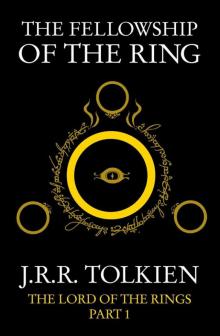 The Fellowship of the Ring
The Fellowship of the Ring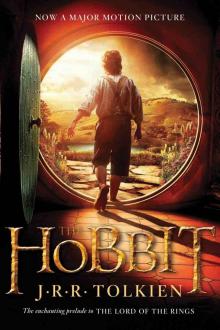 The Hobbit
The Hobbit The Two Towers
The Two Towers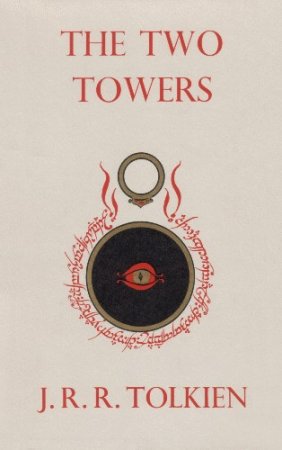 The Return of the King
The Return of the King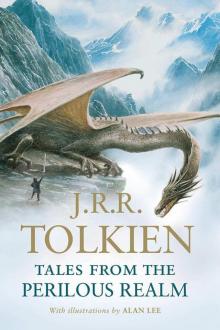 Tales From the Perilous Realm
Tales From the Perilous Realm Leaf by Niggle
Leaf by Niggle The Silmarillon
The Silmarillon The Book of Lost Tales, Part Two
The Book of Lost Tales, Part Two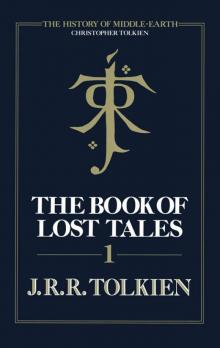 The Book of Lost Tales, Part One
The Book of Lost Tales, Part One The Book of Lost Tales 2
The Book of Lost Tales 2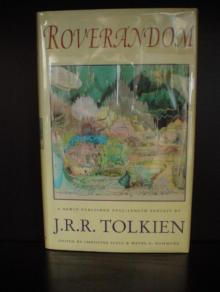 Roverandom
Roverandom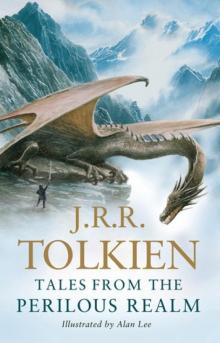 Smith of Wootton Major
Smith of Wootton Major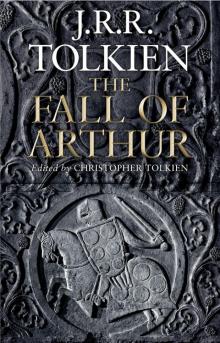 The Fall of Arthur
The Fall of Arthur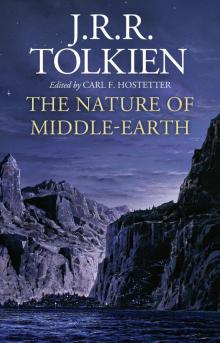 The Nature of Middle-earth
The Nature of Middle-earth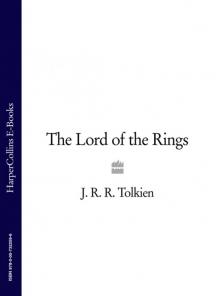 The Lord of the Rings: The Fellowship of the Ring, The Two Towers, The Return of the King
The Lord of the Rings: The Fellowship of the Ring, The Two Towers, The Return of the King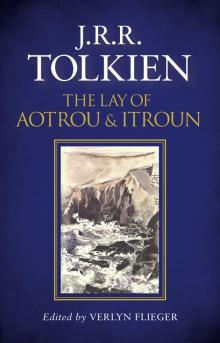 The Lay of Aotrou and Itroun
The Lay of Aotrou and Itroun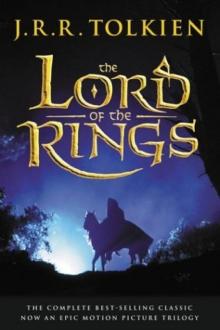 lord_rings.qxd
lord_rings.qxd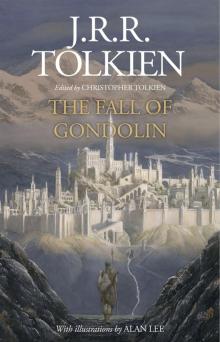 The Fall of Gondolin
The Fall of Gondolin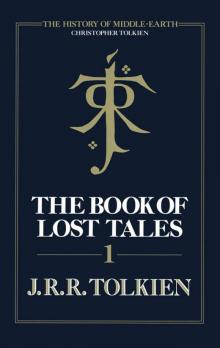 The Book of Lost Tales, Part 1
The Book of Lost Tales, Part 1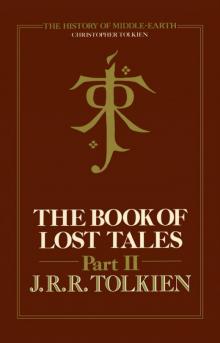 The Book of Lost Tales, Part 2
The Book of Lost Tales, Part 2 The Lord of the Rings
The Lord of the Rings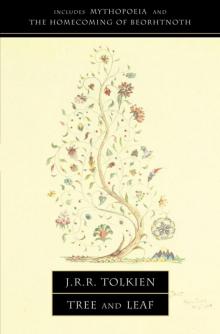 Tree and Leaf
Tree and Leaf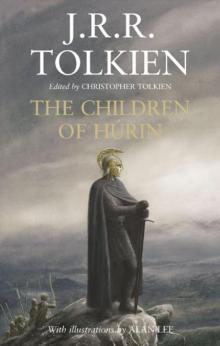 The Children of Húrin
The Children of Húrin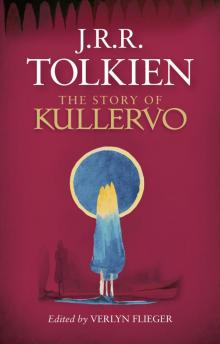 The Story of Kullervo
The Story of Kullervo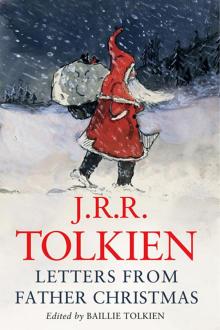 Letters From Father Christmas
Letters From Father Christmas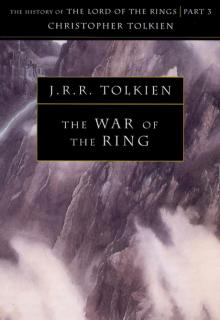 The History of Middle Earth: Volume 8 - The War of the Ring
The History of Middle Earth: Volume 8 - The War of the Ring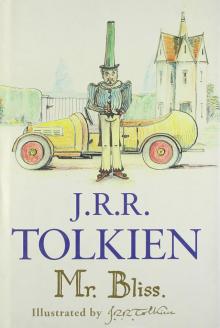 Mr. Bliss
Mr. Bliss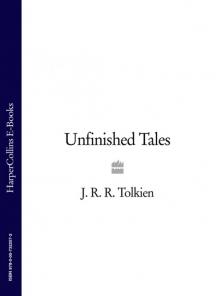 Unfinished Tales
Unfinished Tales The Adventures of Tom Bombadil
The Adventures of Tom Bombadil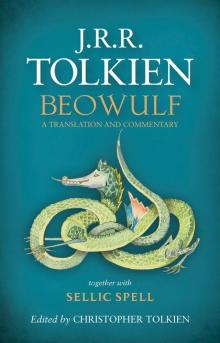 Beowulf: A Translation and Commentary, together with Sellic Spell
Beowulf: A Translation and Commentary, together with Sellic Spell The Silmarillion
The Silmarillion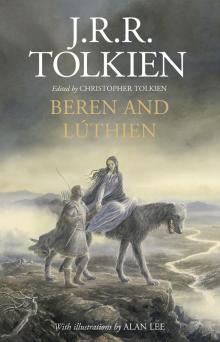 Beren and Lúthien
Beren and Lúthien